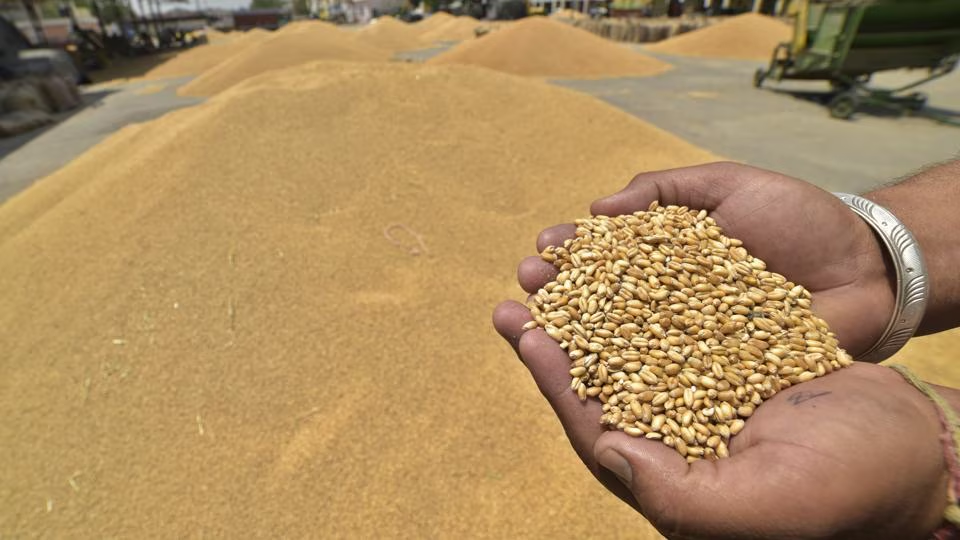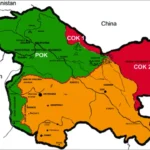New Delhi, May 29, 2025 — In a significant development for the agricultural sector and food security in India, the government has announced record-high projections for both wheat and rice production for the 2024–25 crop year. As per the Ministry of Agriculture and Farmers’ Welfare, a combination of supportive climatic conditions, enhanced cultivation techniques, and the adoption of high-yield crop varieties has led to an expected record harvest, further cementing India’s role as a leading force in global grain production.
Wheat Output to Reach All-Time High
India’s wheat production is projected to hit 117.5 million metric tons—a substantial increase from the 113.5 million tons harvested during the previous year. This new record reflects a consistent upward trend in wheat yield, primarily driven by increased cultivation in northern states such as Punjab, Haryana, and Uttar Pradesh, where farmers adopted climate-resilient seed technologies.
Officials have attributed this success to a blend of timely policy support, optimal weather during critical growing phases, and an expansion in acreage. The use of newer wheat varieties resistant to pests and extreme temperatures has also played a key role in pushing output to new heights.
“The record wheat production underscores the resilience and innovation of Indian farmers. It also reflects the effective implementation of government schemes and precision farming initiatives,” said an official from the Indian Council of Agricultural Research (ICAR).
Rice Production Set to Surpass 149 Million Tons
Alongside wheat, rice production is also expected to reach unprecedented levels. The most recent projections from the government place rice production at 149 million metric tons, marking an increase from the 137.8 million tons harvested in the prior year. This increase is particularly significant given the challenges posed by uneven monsoon patterns in some parts of the country.
Southern and eastern states, including West Bengal, Andhra Pradesh, and Chhattisgarh, have contributed significantly to the rice surge. The wider adoption of Direct Seeded Rice (DSR) technology, improved irrigation methods, and government-backed Minimum Support Price (MSP) policies have helped encourage larger harvests.
Farmers have increasingly turned to hybrid rice varieties that offer greater yield and resistance to common diseases, while agricultural extension services have provided essential guidance on fertilization and water management.
Economic and Strategic Implications
The record harvests come at a time when global food security concerns are high, especially due to climate disruptions and geopolitical conflicts affecting supply chains. India’s rising grain output is expected to strengthen its domestic food buffer, curb inflationary pressures, and potentially allow for increased grain exports, particularly to countries in Africa and the Middle East.
In addition, a strong crop year may ease pressure on government food subsidy programs and help manage public distribution efficiently.
Dr. Rajiv Sharma, an agricultural economist, noted:
“With global commodity markets facing volatility, India’s record grain production provides economic stability and opens up diplomatic opportunities through food exports.”
Government Initiatives Driving Growth
India’s agricultural success this year is also the result of targeted government policies. Initiatives like PM-KISAN, National Food Security Mission (NFSM), and digital platforms for real-time agri-advisory have empowered farmers with better inputs, financial support, and market access.
The use of AI-based forecasting tools and drone monitoring for crop health has further modernized India’s agricultural landscape, allowing early detection of pests and optimizing fertilizer application.
The Pradhan Mantri Krishi Sinchai Yojana has enhanced irrigation coverage, particularly in drought-prone areas, ensuring timely water availability during crucial stages of crop growth.
Challenges Ahead
Although the projections are encouraging, experts advise maintaining vigilance and avoiding complacency. Climate change remains a looming threat to Indian agriculture, with unseasonal rains, rising temperatures, and water scarcity posing potential risks to future productivity.
Sustainable farming practices, investment in water-efficient technologies, and diversification into climate-resilient crops will be key to maintaining long-term agricultural success.
Looking Forward
With wheat and rice production expected to break all previous records, India is on track for a year of agricultural abundance. This milestone not only ensures food security for the nation’s 1.4 billion people but also enhances its potential to serve as a global food supplier.
As the harvest season progresses, the focus will remain on ensuring efficient procurement, storage, and distribution to maximize the benefits of this record output.





